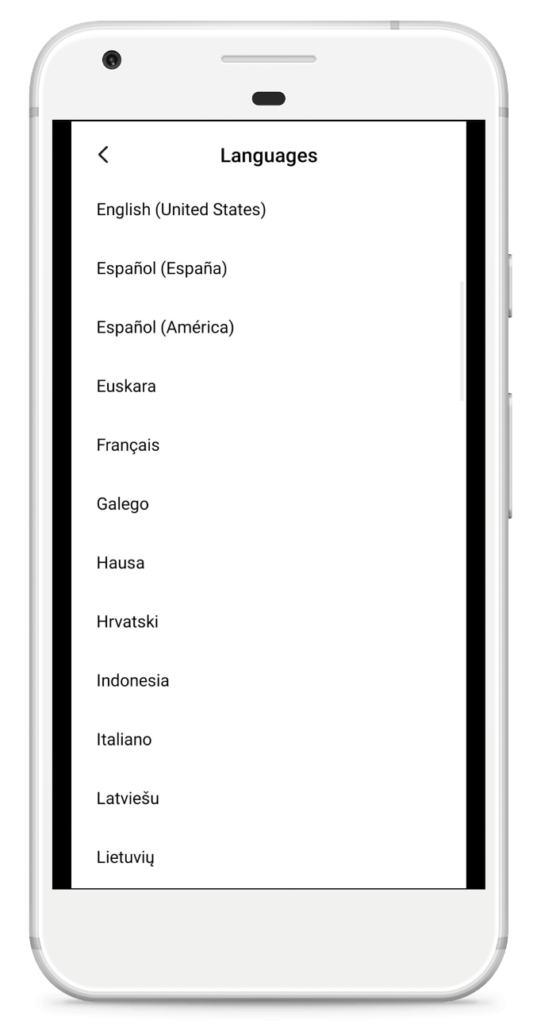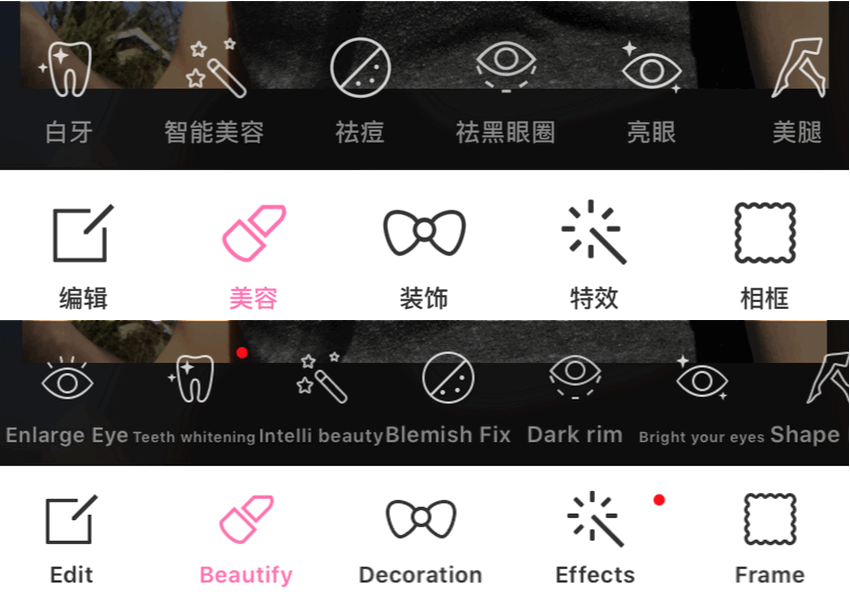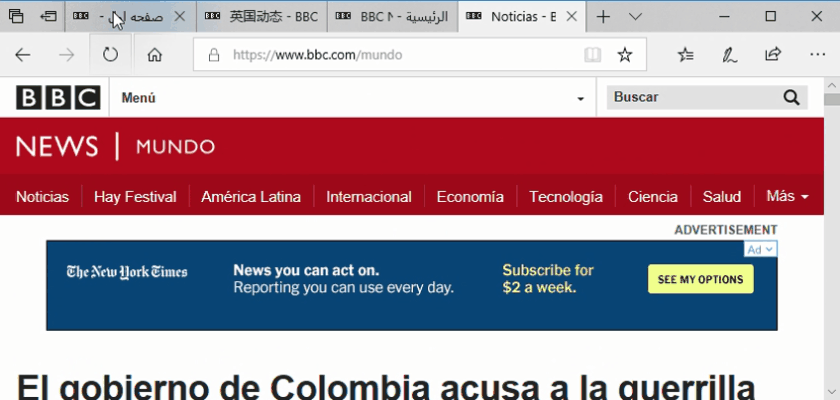For reaching a wider audience, websites or mobile applications must be made available in various locales and languages. There are fundamental peculiarities of every language that make it a challenging task. So in this article we’ll give tips on how to build a multilingual app successfully.
 Specific linguistic nuances such as date and time formats, grammar rules, subject-verb agreement, and the sequence of parts of speech in a sentence make it anything but easy.
Specific linguistic nuances such as date and time formats, grammar rules, subject-verb agreement, and the sequence of parts of speech in a sentence make it anything but easy.
Let us consider Hindi’s case, the fourth most spoken language of the world, contrasted with English.
In the English language, polite, formal requests are often expressed by way of question. “Would you please tell me the reasons behind your decision?”
But in Hindi, subjunctive verb forms are mostly used, and the sentence structure is accordingly altered.
A literal translation from English to Hindi and vice versa, done without pondering over the languages’ nuances, would result in things sounding weird, rude, or both.
The literal translation of the Hindi subjunctive verb forms for the same sentence would be, “It is expected of you to detail the reasons behind reaching the decision.”
So compare the style of English vs. Hindi:
- English: “Would you please tell me the reasons behind your decision?”
- Hindi: “It is expected of you to detail the reasons behind reaching the decision.”
To English speakers, the Hindi statement is, at best, a reminder of duties and, at worst, a rebuke!
Not adhering to the specific tones and nuances of the languages can result in hilariously ridiculous mistakes. These stupid mistakes may create a disconnect between end-users and the business and bring disgrace to the brand.
Don’t Make Ridiculous Mistakes. Get Professional Translations.
Don’t risk the reputation of your brand on “free” translations or translations from unqualified translators. Use IVANNOVATION’s trusted team of linguists and localization specialists to localize your app.
Tell Us About Your App Localization Project
One such deeply offensive goof-up was when Facebook’s translation feature erroneously translated the Chinese leader’s name to Mr. Sh**hole.
Another recent one is when Amazon Prime members were addressed as ‘Pradhan Mantri Sadsya’ i.e., ‘Prime Minister Members’ in the Hindi version of the site.
The Solution: App Localization, Not Just Translation
Localization basically means altering a software product according to a specific market. The modifications include making the product culturally appropriate without compromising on the functionality. It consists of a lot more work than just translation.
Not only do the product creators have to translate the content in the local language, but they also have to understand the specific cultural subtlety of the region.
It doesn’t matter whether you are trying to create a multilingual Android app or a multilingual iPhone app, the ultimate goal of localization is to make people believe that your software product was launched and explicitly designed for their culture, region, and language.
Common Technical Factors Of App Localization
Let us delve into what technical localization factors exist that must be pondered upon for launching a successful multilingual app.
Multilingual Search Engine Optimization
Multilingual applications demand extra work in terms of Search Engine Optimization. One must implement proper schema, language tags, and structure at multiple locations for bringing maximum visibility over search engines. Some of the best practices for multilingual optimization of an app are:
- Translating meta descriptions
- Using plugins having powerful multilingual capabilities
- Not depending solely upon machine translation but deploying high-quality translators too
- Researching long-tail keywords in various languages
Learn About Website Localization
How to Build a Multilingual Website? Here Are the First Steps [Complete Guide]
Prudent Selection Of Fonts
Only those fonts should be selected that can be read in all languages that your app supports. These fonts should also have all the required characters of all the languages supported by the app.
Choosing a Unicode-based font encoded in UTF-8 would accommodate pages written in multiple languages. For this, Adobe’s TypeKit and Google Fonts can enable you to assess a typeface before you start designing the app.

Roboto font supports both Latin (English) and Cyrillic (Russian) scripts.
Take special care if you intend to release the app in any East Asian languages such as Chinese, Korean, or Japanese. Some of the East Asian fonts might require a variable height of the line. The characters in the Chinese language are graphically more intricate than any of the Latin characters. Hence, they need increased vertical space for providing better readability, but you may find that they take up less total space.
Implementing Flexibility In Layout
Some languages are more verbose than others. They take more words to describe what could be done in a few words in the English language. Likewise some languages’ words tend to take more characters to spell. That means that text strings get expanded while translating to certain languages.
For example, ‘next’ becomes ‘an ath rud’ in Gaelic.
English version has four characters, while the Gaelic has ten characters. It means Gaelic is taking two and a half times larger space.
Making the text containers responsive could be one way to deal with it. In an ideal scenario, we should not have text containers having constant dimensions. While designing, form-labels should be put above the fields. It provides more space, and the larger text strings could be easily accommodated.
For example, the following image shows an app that was originally released in Chinese. The app design was perfect for the original Chinese, due to the short length of the text. However, when it was translated to English, it was a disaster because the English text didn’t fit in properly.

The app in this image was originally published in Chinese. When it was translated into English, the English text could not fit properly into the original design.
Most of the linguistic scripts are read and written from left to right. However, in Semitic languages such as Hebrew and Arabic—text is read and written from right to left. If you intend to release your app in Semitic languages, then the layout must support mirroring. Everything, right from navigation buttons, images, and text should be mirrored according to the language.

Remember that some languages like Arabic are read from right-to-left rather than left-to-right.
Consider Local Formats
While coding, the ‘hardwiring’ of units must be avoided at all costs. Take care of the following aspects regarding the units’ format and get those adjusted as per the user preference and region. Here are some units and formats that change from one locale to another.
Dates dd-mm-yyyy is the standard format in the United Kingdom, mm-dd-yyyy is followed in the United States, while in Canada, yyyy-mm-dd is the standard. So, it is crucial to take care of the local format of date to avoid mass confusion.
Units of Measure In the North American continent, the imperial system of measurement—that is, foot and mile for length and pound for weight—are used. In contrast, the United Kingdom and its former colonies in South Asia, such as India and Pakistan, use the metric system, i.e., kilometers and kilograms for distance and weight. Displaying values according to the measurement locale would give users a sense of familiarity with the app.
Currency Displaying the correct currency of the native country is especially crucial for eCommerce applications. People generally like to see and compare prices in their own money. Otherwise, they will have to Google the conversion rate every time they see any product.
Media Sharing Buttons The prevalent social media sites in every part of the world are different. Facebook and Twitter are widely popular globally, except in China—where they have their own versions of social media apps such as Renren and Weibo. Hence, it is necessary that for a multilingual app, appropriate social media sharing buttons be placed.
Speaking of Social Media Sharing Buttons . . .
Share this article by clicking on a social sharing button below.
Issues Beyond Technical Aspects
By taking care of the technical issues, you win half the battle of launching a successful multilingual app. The other half requires looking beyond just the code and focusing on the language. These are some of the aspects.
Paying Heed To The Target Language
If you want your product to be adopted across the national borders, you must know the language people speak and the way they wish to be addressed. For that, you need to research the demographics.
By thoroughly researching the target audience, you will get to know the cultural sensitivity and taboos. There is no universal rule of having the same symbolism, humor, and ethical views across the borders.
For example, the V-sign finger gesture (✌️) is a symbol of victory in the United States. At the same time, it would be a profoundly offensive gesture in the United Kingdom, Australia, South Africa, and New Zealand.
Using Simpler Language
Language is the primary means by which a user communicates with the app. By using idioms and slang, the clarity of the UI would get lost. People would become confused if they cannot decode your message with ease. Not only this, but you would also make the task of the translator very tough.
First of all, translators have to understand the cultural context in which a particular slang is used. Then they have to find the equivalent expression in the target language without losing the original meaning. At times, it could be tough.
If you use simple language in your app product, you can simplify the translator’s task by creating content that is translation friendly.
Yet, if you cannot do away with slang and idioms, listing them into a document together with literal explanations is very much needed. This document should also contain the meaning, background, general usage, and desired effect of the used terms. This way, you can contextualize the specific idioms and slang words and ease the translator’s task.
Get a Free Quote on Your App Localization Project
Are you planning to localize an iPhone app or an Android app? Use our quote form, and we’ll get in touch to learn about your goals and requirements and get you started earning an international userbase.
Get a Free Quote
Fine-Tuning Graphic Elements
People perceive an app product through the words and visual elements such as icons and colors. Now, here is the catch: Colors and icons can have different meanings in different cultures. So, the best practice is to use visual elements that are undoubtedly universal, for example, house, tree, computer, playing, etc.
Always test your visual elements to ensure that they mean the same in all your apps supported language regions.
Regarding icons, mailboxes might seem universal to Americans, but remember that British mailboxes look quite different from those in America—both personal and public mailboxes. Further, in some countries personal mailboxes are almost unheard of. Envelopes, however, are more widely used with roughly the same design worldwide. So an envelope icon might be better than a mailbox icon.
Similarly, colors have different meanings in different cultures. Red signifies good luck in China, but red is generally associated with danger in the western world.
Read More
Learn more about graphic elements, units, formats and more in localization from our article: How to Build a Multilingual Website: A Guide.
Creating Strict Editorial Benchmarks
Your app product’s original version, having English as its language, probably has a distinct tone and character. So, while localizing the app in a different cultural context, you have to maintain the same style and character. For that, you need to set up strict editorial benchmarks for keeping the branding consistent across the borders.
Winding Up
We live in an era when businesses are transnational. So, having a multilingual app could be hugely rewarding for carrying out global business, expanding the customer base, and earn more profit.
The primary factor that must never be forgotten is to provide a seamless and satisfactory user experience focusing on the values, rules of etiquette, and symbols of the target region. Not only should it be technically robust, but the cultural perfection should also be built into it.
The localized multilingual app development is a valid method to enter new regions and is one of the top trends while hiring an app development company nowadays. Follow these technical and non-technical tips for building a multilingual mobile app and kickstart ‘beyond the borders’ business journey.
Like the Article?
Click here to share on Twitter>>
Tweet
Click here to follow IVANNOVATION on Twitter and be first to learn about our new content>> Follow @ivannovation
Naveen Joshi – I work as a Technology Consultant in one of the top US-based software development companies. Having spent 10+ years of my life in delivering functional software in various roles, I have gained immense experience of the strategies that really work, what are the operational realities of our time and domain, and which methodologies just remain on paper as a good read. For these many years, my job of getting things done in the best way possible has enlightened me to distinguish theory from practice, wrongs from rights, and doomed-to-fail shortcuts from rigorous methods.




Keep writing such a useful articles